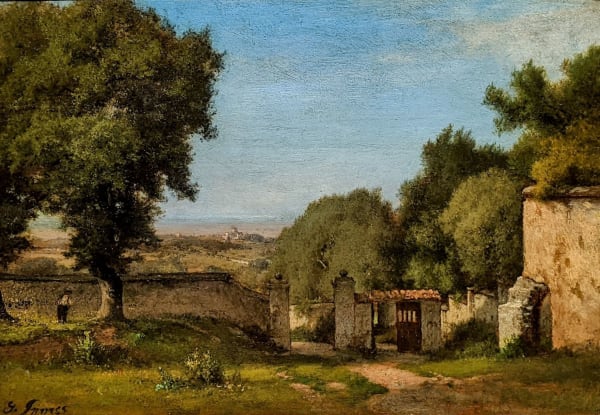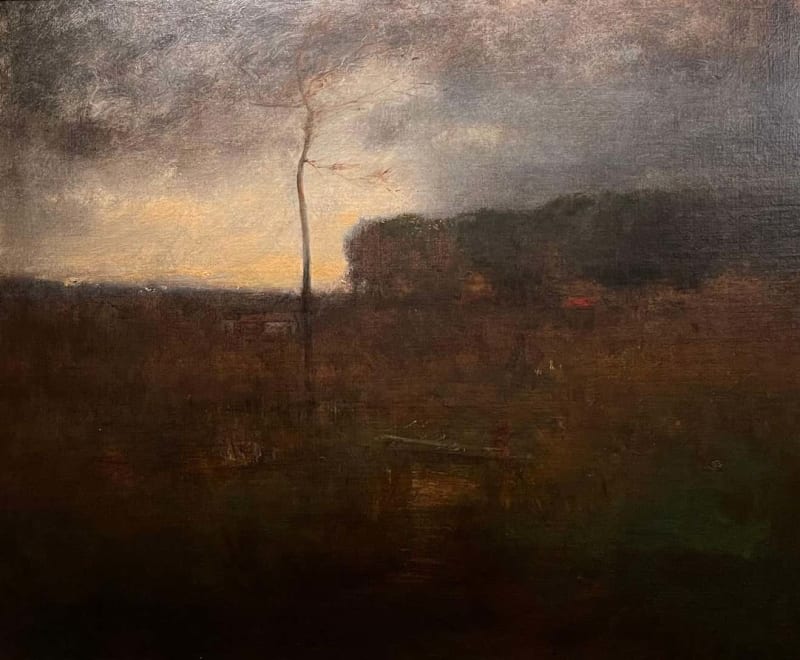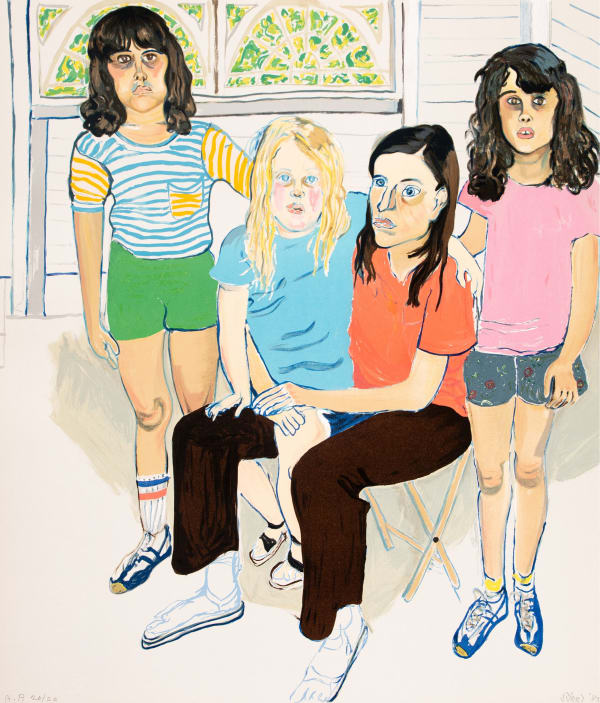George Inness was never obscure about his philosophy of art. “The purpose of the painter,” he said, “is simply to reproduce in other minds the impression which a scene has made upon him. A work of art does not appeal to the intellect. It does not appeal to the moral sense. Its aim is not to edify, but to awaken an emotion.”
Inness’s late paintings seem almost breathed upon the canvas rather than applied by a human hand. By using the softest of light, his work conveyed an intense emotional and spiritual sensitivity towards nature and the world.
George Inness was born near Newburgh, New York, the fifth of thirteen children. He was largely self-taught except for an apprenticeship at an engraving firm and brief study in New York with Regis Francois Gignoux. In his early years, Inness was overawed by the works of Thomas Cole and Asher Durand. As early as 1844, Inness exhibited his first work at the National Academy of Design and by the end of the 1840s, he had achieved both commercial and critical acclaim.
In 1851, sponsored by a patron, Inness made a 15-month trip to Italy. He initially spent time in Florence but traveled to France in 1853, where he first discovered Barbizon landscape painting. His own style immediately changed, dropping the hyper-realism of the late Hudson River School for the looser brushwork, darker palette, and greater emphasis on mood of the French school.
In the middle part of his career, Inness was the leading U.S. exponent of Barbizon-style painting. He experimented with glazes that allowed him to fill his compositions with subtle effects of light. Inness’s paintings in the 1860s and 1870s often contain panoramic and picturesque views of the Catskills, the Delaware Valley, or the New Jersey countryside. He highlighted the dramatic effects of weather and atmosphere, especially cloudy and threatening skies. He traveled extensively, living in Rome from 1871 to 1875 and painting numerous views of the Italian countryside.
In the late 1860s, Inness became a follower of Emanuel Swedenborg, an 18th-century theologian who believed that all material things were imbued with a mystical, spiritual presence. Swedenborg proposed a philosophy in which earthly and heavenly realms were united. Inness’s new theological beliefs had a tremendous effect on his life. He maintained that “The true use of art is, first, to cultivate the artist's own spiritual nature.”
In his greatest paintings of the 1880s and 1890s, Inness jettisoned well-defined, objective landscapes for free atmospheric effects set in twilight, mist, or moonlight. His subjects became indistinct, hazy, and abstract, suggesting to the viewer their existence in both material and immaterial worlds. Inness’s late paintings rejected modernist techniques of expressive, virtuosic brushwork that revealed the presence of the artist. Instead, he emphasized the spiritual nature of art. “If only I could paint it without paint,” he lamented. His mastery of light, color, and shadow implied a mystical component akin to twentieth-century color-field painting.
In the 1880s, Inness settled in Montclair, New Jersey, but continued to travel extensively, including trips to Cuba, California, Europe, and Mexico. When he died in 1894, one obituary called him “the foremost landscape artist of his country and one of the greatest landscape painters in the world.”
Inness’s blend of Hudson River School ideas with Barbizon styles and Swedenborgian theology make him a unique nineteenth-century artist. Yet he was also highly influential; the softened edges of his shapes and his use of saturated color in his late paintings identify him as a founder of Tonalism. His misty, poetic, and introspective landscapes, infused with a deep, profound, spiritual content, will never go out of style.
-

150 Years of Influential Instructors
Historical Teachers at the Art Students League January 16 - February 28, 2025 Upper East SideRead more -

The Inaugural Show
A Century in American Art May 3 - September 3, 2022Lincoln Glenn is proud to invite you to its inaugural exhibition at 126 Larchmont Ave. This first exhibition will be a sample of the gallery's inventory, representing over 100 years...Read more








